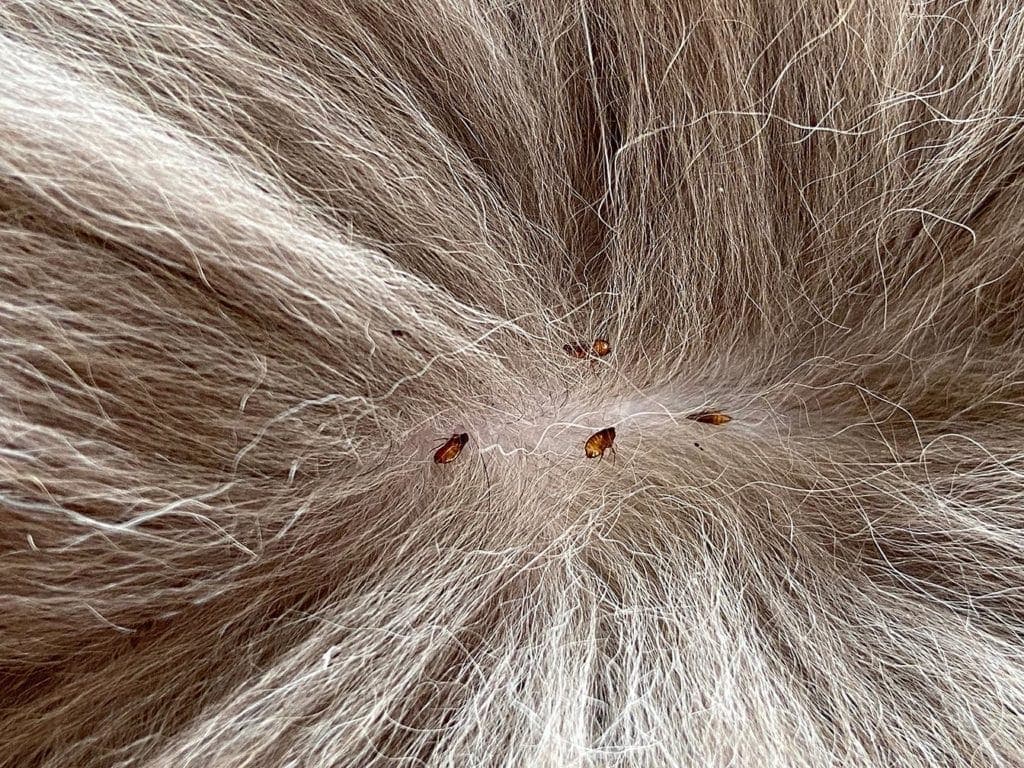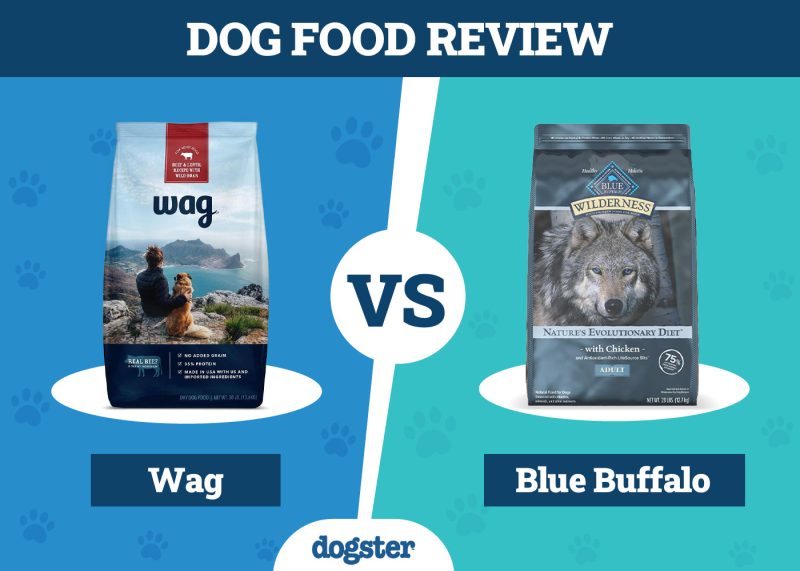One of the common downsides to sharing your home with pets is that they sometimes bring in uninvited guests, and if fleas invade, it can be a massive undertaking to eliminate them from both your pets and your home.
Fortunately, there are many ways to deal with these annoying parasites, most of which you can find at your local vet, pet store or even online. If you are looking for the most efficient way to get rid of fleas from your pets and your home, your vet is the best place to start, as prescription level treatments are always going to be the most effective.
Sometimes we might be wanting to look for a more natural alternative, or something that will do in a pinch, which leads to the question: will salt kill fleas?
Simply put, yes salt will kill fleas, BUT it may also kill your pets.

Salt vs. Fleas
Guaranteed to be found in every home, salt is a ubiquitous condiment with an array of uses, the most important being (in my humble opinion) the seasoning of hot potato chips! It can be used for cleaning, deodorizing and de-icing, but can it be used to kill fleas? Let’s get into the hows and why nots of using salt to kill fleas.
Salt will kill fleas by dehydrating and destroying their exoskeleton. In order to be effective, you would need to lay a generous layer of salt anywhere and everywhere fleas are residing, and this will only kill the adult fleas that are present, leaving the eggs and larvae to replenish the population in a matter of days.

Salt vs. Your Pets
Although sodium (aka salt) is an important component of their diets, salt can be toxic, even fatal, if too much is ingested by your pets. Many pets will find the taste of salt appealing, so they will lick it not only from their coats or paws, but from their environment as well.
Hypernatremia (high levels of sodium in the blood) can lead to dehydration, vomiting, seizures and kidney damage. Sodium affects the way in which fluid enters and exits cells in the body, and in high levels, causes fluid to exit cells. The dehydration and thirst created by salt ingestion will often lead to the animal drinking a large volume of water, causing a rapid influx of fluid back into the cells. When this occurs in the brain, it results in catastrophic, often fatal, swelling of the brain.
What Should We Use to Kill Fleas?
The trouble with a lot of natural or store bought flea treatments is that they only deal with part of the flea life cycle; the adults. The larvae and eggs remain in the coat or the environment, so before you know it, the fleas are back. Quite often in veterinary practice, we see people who have tried a multitude of methods before finally coming in for prescription-level products, when they could have saved a lot of time and money by coming straight to us. However, we also understand that many people would prefer to try more natural, or less potent, methods before reaching for the “strong stuff”.
Another challenge is natural selection; over time, fleas become more resistant to products and methods that have been used in the past. With each generation, we are left with more resilient fleas, which is why products that have worked in the past can become less effective. Often, this process is made worse by the incorrect use of insecticidal treatments, which is why the products that contain the most effective ingredients are only available with a veterinary prescription. These products treat all stages of the flea life cycle and, by killing fleas rapidly, prevent them from laying eggs in the environment.
In most cases, just treating your pet will be enough, but with severe infestations, treatment of the whole house, including the outside, will be needed. Depending on the severity of the infestation, this may mean using a household spray or powder, or a full-scale fumigation.
For pets that do not go outside (eg. indoor cats), the risk of fleas is certainly much lower, but do not be fooled; fleas can still find their way inside and onto your pet. In this situation, it is often sufficient to treat your pets on an “as needed” basis, but we should be aware that the sporadic use of insecticides against fleas is technically “off-label” and can lead to the development of resistance to these chemicals in the flea population.
In addition to killing the fleas that are already there, preventing them from returning is what makes the difference between flea treatment and flea control. There is a great selection of products available to suit your pet; collars, tablets or spot-ons, products to treat fleas PLUS ticks, products that also treat intestinal worms, the range of products can be overwhelming! Each product will be effective for a set period of time, typically from 1-3 months, and to achieve good, long term control of fleas, you must use the product at the time intervals prescribed. Most veterinary practices will only keep a set variety of products in stock, and this is largely because it simply isn’t practical to have every possible type and brand available, so if you think you need to try something different from what is available, always ask your veterinarian about other options.
If you need to speak with a vet but can't get to one, head over to PangoVet. It's an online service where you can talk to a vet online and get the personalized advice you need for your pet — all at an affordable price!
How do I know if my pet has fleas?
Some pets that have lots of fleas are not overly itchy, and others with very few fleas will be extremely itchy. Just because your pet is scratching, it does not necessarily mean they have fleas.
The easiest way to tell if your pet has fleas is by going through their coat with a flea comb. Check for fleas in the finer fur between their back legs or on their tummies, as this is where you may see them scurrying. Run the comb over various parts of their body and then examine the teeth of the comb. If you see fleas, you have your answer. If you find little specks of black or brown “dirt” on the comb or on your pet’s skin, touch the dirt to some wet cotton wool; if it turns rust-red, you’ve got fleas. The dirt is flea poop, and wetting it shows that it is digested blood.

What is Flea Allergy Dermatitis?
Pets that suffer from Flea Allergy Dermatitis (FAD) have an extreme, allergic response to fleas, and it can affect cats and dogs. Quite often, FAD pets may have relatively low numbers of fleas, but will have scabs and hair loss around their necks, tummies, and backs, and they are very itchy. If your pet suffers from FAD, it is essential that ALL pets in the household are on good flea control all year round, as even a single flea can trigger a distressing, whole-body reaction in these animals.
Do I still need to use flea control in winter?
Yes! Although fleas prefer warmer temperatures and become less active in cooler months, when we turn on our heating, the fleas migrate to where it is warm; inside the house. If your pets spend time inside your home, continue to be vigilant for fleas over winter or face the itchy consequences!
Are there any other ways to help get rid of fleas in the house?
Regular vacuuming is a simple way to help eliminate fleas and their eggs from your home. Pay particular attention to carpets, nooks and crannies as this is where fleas will tend to gather. Washing bedding at high temperatures will kill fleas, eggs, and larvae, but to be extra sure, 30 minutes in the dryer will really finish them off.

Final Thoughts
We love sharing our homes with our pets, but we don’t want to be sharing our homes with fleas. There are a multitude of options for killing fleas and preventing their return, the most effective of which are found at your local vet.
There are certainly some more natural approaches to dealing with fleas, such as flea combing, bathing, or sprinkling diatomaceous earth around the home, but as they only kill adult fleas, these methods tend to be time-consuming and often unrewarding, leaving you frustrated, and your pets itchy.
We must also be aware that some natural remedies can actually be VERY unsafe for our pets, and seemingly harmless table salt is a classic example. Although salt will kill fleas, it can be toxic to your pets, even in small amounts. Talk to your vet about the best way to deal with fleas, and keep the salt safely in the kitchen (and on my chips!) where it belongs.
See also:
- 6 Creative Life Hacks for Living With Dogs (Guide)
- Diatomaceous Earth for Dogs: Vet-Approved Types, Pros, Cons & FAQ
Featured Image Credit: mkupiec7, Pixabay






















One Response
I have tried vet suggested, as well as every flea treatment available in my small town of Saltash and nearest city Plymouth. Nothing works.
My 1st dog was collie x and with her i was fishing 5 days a week. She loved swimming and never once had fleas.
2nd dog. Malamute. Exactly the same.
Now I have an Alaskan x. I do still fish, but I go carp fishing, which is freshwater. She had fleas non stop for 2-3 years. I tried hoover ones, spray on ones etc along with the flea treatments themself, and although they were killing most each time. "Nothing" actually works properly.
I spent a week taking her to my local creek at high tide and problem solved. She's not a big one for swimming, just likes to wade around up to her limit. Yet problem solved.
I dread to think how much money I wasted on treatments. Had to be getting around a thousand.